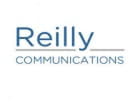There are no absolutes in investing. There's no risk without reward, and no reward without risk.
Platitudes? Probably, but they do help to frame the discussion around buying General Electric (NYSE:GE) versus Honeywell International (NYSE:HON) stock. GE represents the higher-risk/higher-reward option while Honeywell is the lower-risk/lower-reward option. But on balance which is the better buy?
Valuation comparison between Honeywell and General Electric
General Electric is a turnaround play that has more upside potential if everything goes as planned and commercial aerospace markets recover in due course. Meanwhile, Honeywell is definitely the higher quality company with more secure revenue streams, but it trades on a hefty valuation, which limits its stock's upside potential.
These arguments can be expressed by looking at the Wall Street analyst consensus for free cash flow (FCF) generation for the two companies and what it means for their valuations. As a rough rule of thumb, a forward price-to-FCF multiple of around 20 is seen as a decent value for an industrial conglomerate.

IMAGE SOURCE: GETTY IMAGES.
There are two conclusions to be drawn from the table below. First, neither stock looks to be a great value right now. Anyone buying either stock is going to have to be patient and/or believe there's upside potential to earnings and FCF growth.
Second, GE's FCF looks set for a dramatic improvement in the coming years while Honeywell is set to recover to 2019 levels in 2022. On this basis you could argue that GE is the better value, because based on analyst estimates, its valuation will be lower in 2022 and it should have better growth momentum. Case closed?
| Company/Metric | 2019 | 2020 Est | 2021 Est | 2022 Est |
|---|---|---|---|---|
| Honeywell FCF | $6.1 billion | $4.3 billion | $5.4 billion | $6 billion |
| General Electric FCF | $2.4 billion | ($1.2 billion) | $2.8 billion | $4.6 billion |
| Honeywell Price to FCF | 24.2 times | 33.8 times | 27.4 times | 24.4 times |
| General Electric Price to FCF | 42.6 times | N/A | 36.6 times | 22.3 times |
The case for General Electric
Unfortunately, investing isn't that easy. There are the numbers and then there's believing in the numbers. As such, investors should never slavishly follow the Wall Street consensus and always consider the downside risk to the numbers. Investors should also consider the upside risk.The case for buying General Electric is based on the idea that the commercial aviation markets will recover, leading to an improvement in engine sales and spares sales, while military aviation sales will provide some support. Meanwhile, investors are hoping the power and renewable energy margin will be improved in line with GE's peers. Ongoing growth in healthcare is expected to provide earnings and FCF support during the recovery period.
General Electric Industrial Segment | First Nine Months 2020 | First Nine Months 2019 | Change |
|---|---|---|---|
| Power | ($19 million) | ($84 million) | (122.6%) |
| Renewable Energy | ($493 million) | ($469 million) | 5.1% |
| Aviation | $681 million | $4,764 million | (85.7%) |
| Healthcare | $2,212 million | $2,714 million | (18.5%) |
The case for Honeywell
Honeywell's earnings have held up much better than GE's during the pandemic, and it has a much more diversified stream of earnings to rely on in the future. In fact, some of its businesses are arguable beneficiaries of the pandemic. For example, its warehouse automation (largely for e-commerce logistics) and its personal protective equipment businesses in the safety and productivity solutions segment have done very well.
The aerospace segment's relative overexposure to business aviation -- a market faring much better than commercial aviation -- has helped Honeywell. Furthermore, good exposure to defense and space (around 15% of total company revenue in 2019 compared to 24% for commercial aviation) will also provide support.
Honeywell International Segments | First Nine Months 2020 | First Nine Months 2019 | Change |
|---|---|---|---|
| Aerospace | $2,082 million | $2,653 million | (21.5%) |
| Honeywell building technologies | $794 million | $868 million | (8.5%) |
| Performance materials and technologies | $1,373 million | $1,790 million | (23.3%) |
| Safety and productivity solutions | $610 million | $598 million | 2% |
DATA SOURCE: HONEYWELL INTERNATIONAL.
The major downside risk for Honeywell mainly comes from the headline risk of the economy and, to a lesser extent than GE, conditions in the commercial aerospace market. On a positive note, Honeywell building technologies (HBT) might be able to drive sales growth through selling technology aimed at creating healthier, cleaner buildings. In addition, if the price of oil continues its current rally, then Honeywell's process solutions and UOP (absorbents and catalysts for refining) are likely to have upside potential.

BOTH COMPANIES ARE HOPING FOR A RECOVERY IN AIR TRAVEL. IMAGE SOURCE: GETTY IMAGES.
Better buy?
Frankly, you don't have to buy either stock -- there are plenty of other investing options out there. That said, if forced to choose I think GE is a slightly better buy right now.
Honeywell is the higher-quality company and if you had to buy and hold a company for the next five years you could argue that there's a higher degree of certainty that you will generate positive returns with Honeywell. However, Honeywell's upside potential is limited by its valuation, while GE still has some upside potential if its end markets and internal execution play out as expected.
Should you invest $1,000 in General Electric Company right now?
Before you consider General Electric Company, you'll want to hear this.
Investing legends and Motley Fool Co-founders David and Tom Gardner just revealed what they believe are the 10 best stocks for investors to buy right now... and General Electric Company wasn't one of them.
The online investing service they've run for nearly two decades, Motley Fool Stock Advisor, has beaten the stock market by over 4X.* And right now, they think there are 10 stocks that are better buys.














